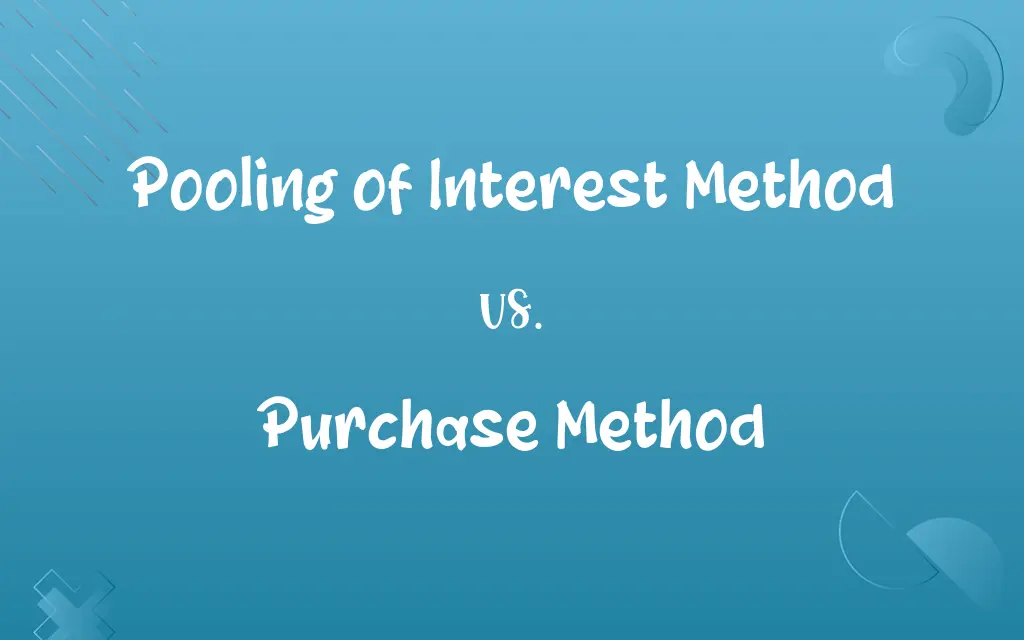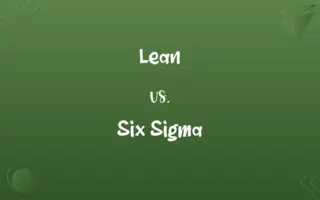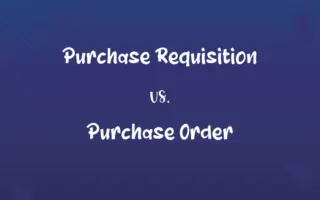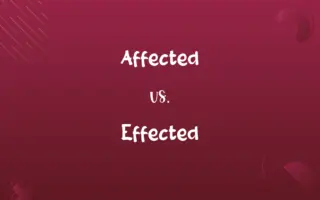Pooling of Interest Method vs. Purchase Method: Know the Difference

By Shumaila Saeed || Published on January 29, 2024
Pooling of Interest Method combines two companies' financials without considering premium or goodwill, while Purchase Method accounts for the actual purchase price, recognizing goodwill and premium.

Key Differences
The Pooling of Interest Method for accounting merges two companies' financial statements as if they have always been a single entity. This method ignores the individual values of assets and liabilities, treating the merged entity as a continuation of the existing businesses. In contrast, the Purchase Method involves the acquiring company restating the assets and liabilities of the acquired company at fair market value, often leading to the creation of goodwill on the balance sheet.
Shumaila Saeed
Jan 29, 2024
Under the Pooling of Interest Method, companies do not need to reevaluate assets and liabilities, meaning no goodwill is recognized. This method is based on the idea that the merger is a partnership of equals. On the other hand, the Purchase Method requires the reassessment of all assets and liabilities at their current market value, which can significantly impact the financial statements, especially through the recognition of goodwill.
Shumaila Saeed
Jan 29, 2024
Financial reporting under the Pooling of Interest Method tends to show a more continuous financial history, as past financial statements are presented as if the companies were always combined. However, the Purchase Method often results in a more abrupt change in financials, reflecting the acquisition cost and the reevaluation of assets and liabilities.
Shumaila Saeed
Jan 29, 2024
The Pooling of Interest Method is less commonly used today due to its lack of transparency in reflecting the true cost of an acquisition. The Purchase Method, in contrast, is widely adopted as it provides a clearer picture of the acquisition's impact on the financials, especially in terms of the cost paid and the value of assets acquired.
Shumaila Saeed
Jan 29, 2024
Tax implications differ significantly between the two methods. The Pooling of Interest Method can often result in more favorable tax conditions due to the absence of goodwill amortization. Conversely, the Purchase Method can lead to higher taxable income in the initial years after acquisition due to goodwill amortization.
Shumaila Saeed
Jan 29, 2024
ADVERTISEMENT
Comparison Chart
Financial Statement Integration
Combines financials as if entities were always one
Reflects acquisition with revalued assets and liabilities
Shumaila Saeed
Jan 29, 2024
Goodwill Recognition
Does not recognize goodwill
Recognizes and records goodwill
Shumaila Saeed
Jan 29, 2024
Asset and Liability Valuation
Uses historical book values
Reevaluates at current market value
Shumaila Saeed
Jan 29, 2024
Financial History Continuity
Shows a continuous financial history
Indicates a clear change due to acquisition
Shumaila Saeed
Jan 29, 2024
Tax Implications
Often more favorable due to no goodwill amortization
May increase taxable income due to goodwill amortization
Shumaila Saeed
Jan 29, 2024
ADVERTISEMENT
Pooling of Interest Method and Purchase Method Definitions
Pooling of Interest Method
A merger accounting method treating the combined entity as a continuation.
By applying the Pooling of Interest Method, the financial history of both firms appeared uninterrupted.
Shumaila Saeed
Jan 08, 2024
Purchase Method
An acquisition approach reflecting true costs and values of the acquired entity.
The Purchase Method provided a clear financial impact of the acquisition on the balance sheet.
Shumaila Saeed
Jan 08, 2024
Pooling of Interest Method
An accounting technique avoiding the creation of goodwill.
The Pooling of Interest Method eliminated the need to record goodwill during the merger.
Shumaila Saeed
Jan 08, 2024
Purchase Method
This method reevaluates assets and liabilities at market value post-acquisition.
The Purchase Method required reassessment of the acquired company's assets at current values.
Shumaila Saeed
Jan 08, 2024
Pooling of Interest Method
A method where financials of merging companies are combined without revaluation.
The merger used the Pooling of Interest Method, maintaining the original balance sheets of both companies.
Shumaila Saeed
Jan 08, 2024
ADVERTISEMENT
Purchase Method
A method offering a transparent view of the acquisition’s financial effects.
The company chose the Purchase Method for its transparency in financial reporting post-acquisition.
Shumaila Saeed
Jan 08, 2024
Pooling of Interest Method
A merger approach prioritizing historical values over current market value.
The Pooling of Interest Method preserved the historical asset values of both companies.
Shumaila Saeed
Jan 08, 2024
Purchase Method
A technique creating goodwill based on the difference between purchase price and net assets.
The Purchase Method led to a significant amount of goodwill due to the high purchase price.
Shumaila Saeed
Jan 08, 2024
Pooling of Interest Method
This method combines two entities' financials as if they've always been together.
The Pooling of Interest Method reflected a seamless merger in the company's financial reports.
Shumaila Saeed
Jan 08, 2024
Purchase Method
An accounting method recognizing the actual purchase cost in a merger.
Using the Purchase Method, the company recorded the total acquisition cost on its balance sheet.
Shumaila Saeed
Jan 08, 2024
Repeatedly Asked Queries
What is the Purchase Method?
It's an acquisition accounting method that involves revaluing the acquired company's assets and liabilities at market value.
Shumaila Saeed
Jan 29, 2024
How does the Pooling of Interest Method treat assets and liabilities? I
t combines assets and liabilities at historical book values without revaluation.
Shumaila Saeed
Jan 29, 2024
What is the Pooling of Interest Method?
It's a merger accounting method where the financials of two companies are combined as if they've always been one entity.
Shumaila Saeed
Jan 29, 2024
How does the Purchase Method affect financial statements?
It can lead to significant changes, reflecting the acquisition cost and revalued assets and liabilities.
Shumaila Saeed
Jan 29, 2024
Does the Purchase Method create goodwill?
Yes, it often leads to the recognition of goodwill based on the purchase price over net assets.
Shumaila Saeed
Jan 29, 2024
Is the Pooling of Interest Method still widely used?
No, it's less common now due to its lack of transparency in financial reporting.
Shumaila Saeed
Jan 29, 2024
Can the Pooling of Interest Method impact taxes?
Yes, it can result in more favorable tax conditions as it doesn't involve goodwill amortization.
Shumaila Saeed
Jan 29, 2024
Why might a company choose the Pooling of Interest Method?
For a merger perceived as a partnership of equals and to maintain historical financial continuity.
Shumaila Saeed
Jan 29, 2024
Is the Pooling of Interest Method favorable for all mergers?
Not always, it depends on the nature and goals of the merger.
Shumaila Saeed
Jan 29, 2024
What's a major difference in financial reporting between the two methods?
The Pooling of Interest Method shows a more continuous financial history, while the Purchase Method highlights the acquisition's immediate financial impacts.
Shumaila Saeed
Jan 29, 2024
What is a key advantage of the Purchase Method?
It offers a clearer and more transparent view of the financial impact of an acquisition.
Shumaila Saeed
Jan 29, 2024
Does the Purchase Method change the historical financials of the acquired company?
Yes, it reevaluates and integrates them into the acquirer's financials.
Shumaila Saeed
Jan 29, 2024
Is goodwill always present in the Purchase Method?
Generally, yes, if the purchase price exceeds the net asset value of the acquired company.
Shumaila Saeed
Jan 29, 2024
Can the Pooling of Interest Method hide acquisition costs?
It can obscure the real cost of a merger as it doesn't revalue assets and liabilities.
Shumaila Saeed
Jan 29, 2024
How does the Pooling of Interest Method affect shareholders?
It typically shows less immediate financial impact on earnings per share.
Shumaila Saeed
Jan 29, 2024
How does the Purchase Method influence balance sheets?
It can lead to an increase in assets and potentially higher liabilities.
Shumaila Saeed
Jan 29, 2024
What is the impact of the Purchase Method on company valuation?
It can provide a more accurate valuation by reflecting true market values.
Shumaila Saeed
Jan 29, 2024
How does the Purchase Method impact future earnings reports?
It can affect earnings through depreciation and amortization of revalued assets and goodwill.
Shumaila Saeed
Jan 29, 2024
Does the Purchase Method require goodwill amortization?
Yes, goodwill recognized under this method is typically amortized over time.
Shumaila Saeed
Jan 29, 2024
Can the Pooling of Interest Method be used for all mergers?
No, it's subject to specific accounting standards and may not be suitable for all mergers.
Shumaila Saeed
Jan 29, 2024
Share this page
Link for your blog / website
HTML
Link to share via messenger
About Author
Written by
Shumaila SaeedShumaila Saeed, an expert content creator with 6 years of experience, specializes in distilling complex topics into easily digestible comparisons, shining a light on the nuances that both inform and educate readers with clarity and accuracy.









































































